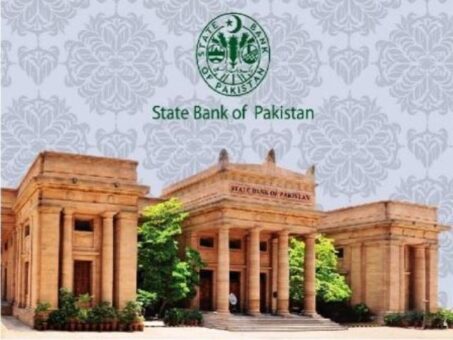KARACHI: The State Bank of Pakistan (SBP) is likely to keep key policy rate unchanged at 15 per cent in a meeting scheduled on Monday, August 22, 2022.
According to analysts majority of market participants are expecting no change in policy rate.
READ MORE: Pakistan hikes key policy rate by 125 basis points to 15%
Topline Research conducted a Poll from market participants to assess their view on the upcoming Monetary Policy announcement scheduled on August 22, 2022.
As per the survey, 56 per cent of the participants expects no change in policy rate in upcoming monetary policy. Around 43 per cent of the participants anticipates an increase whereas 1 per cent of the participants expects a decrease in policy rate.
Responding to second question on their view about policy rate by end of fiscal year 2022/2023, 45 per cent of the participants expects policy rate to be in the range of 12.01 per cent to 14 per cent and 5 per cent of the participants anticipate it to be in the range of 10 per cent-12 per cent by June 2023.
In terms of outlook for Current Account Deficit (CAD), 39 per cent of the participants expect CAD to be below $9 billion in the current fiscal year while the remainder expects CAD to be higher than $9 billion in the fiscal year 2022/2023. To recall, CAD in in the fiscal year 2021/2022 had clocked in at $17.4 billion led by sharp uptick in imports.
These results are also in line with our estimates where we think that policy rate will remain unchanged in upcoming monetary policy and are now near its peak where we can see a decline in policy rates in the second half of 2022/2023.
Since the last monetary policy announcement on July 7, 2022, expectation of improvement in external account has increased as Pakistan signed staff level agreement with International Monetary Fund (IMF) on July 13, 2022 and IMF’s board is likely to approve tranche of $1.2 billion.
Due to import curtailment measures, imports in July 2022 also fell by 38 per cent MoM to $4.9 billion leading to 47 per cent lower trade deficit in July 2022 as per Pakistan Bureau of Statistics (PBS).
Consequently, Pakistan Rupee (PKR) has also started strengthening after making a low of Rs240 on July 28, 2022, it has strengthened to Rs216 against USD in the interbank market. These positive news flows have increased prospects of status quo in upcoming monetary policy.


